Range Rover Evoque: Brake System - General Information
Brake System Bleeding
CAUTION: Brake fluid will damage paint finished surfaces. If spilled, immediately remove the fluid and clean the area with water.
NOTES:
Bleeding of the complete brake system must be carried out using Land Rover approved diagnostic equipment. Where only the primary or secondary brake circuits have been disturbed in isolation, it should only be necessary to bleed that circuit. Partial bleeding of the hydraulic system is only permissible if a brake tube or hose has been disconnected with only minimal loss of fluid.
Some variation in the illustrations may occur, but the essential information is always correct.
All vehicles
1. WARNING: Make sure to support the vehicle with axle stands. Raise and support the vehicle.
2. Check that the brake fluid lines are secure and that there are no signs of a brake fluid leak. If a brake fluid leak is detected, investigate and rectify the cause of the leak before bleeding the brakes.
3. Pump the brake pedal until the brake vacuum assistance is exhausted.
Right-hand drive vehicles
4.
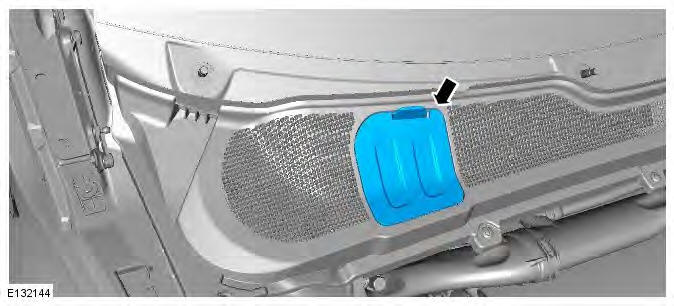
Left-hand drive vehicles
5.
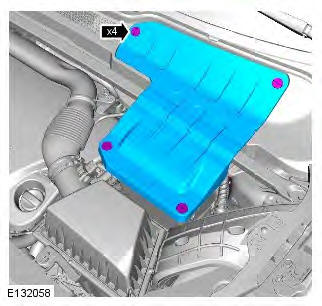
All vehicles
6. WARNING: Do not allow dirt or foreign liquids to enter the reservoir. Use only new brake fluid of the correct specification from airtight containers. Do not mix brands of brake fluid as they may not be compatible.
NOTE: LH illustration shown, RH is similar. Remove the brake fluid reservoir cap.
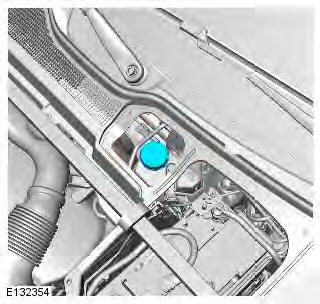
7. NOTE: LH illustration shown, RH is similar. Fill the brake fluid reservoir to the MAX mark.
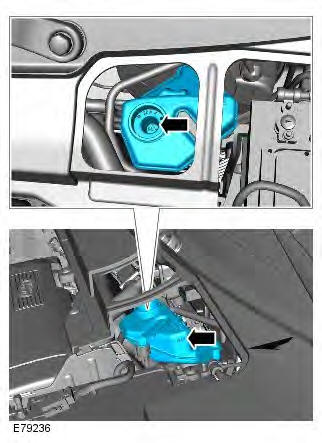
All vehicles
8. Install the bleed tube to the brake caliper bleed screw and immerse the free end of the bleed tube in a bleed jar containing a small quantity of approved brake fluid. Install the bleed tube to the brake caliper bleed screw and immerse the free end of the bleed tube in a bleed jar containing a small quantity of approved brake fluid.
Left-hand drive vehicles
9. Starting at the brake caliper furthest away from the brake master cylinder, loosen the bleed screw by one-half to three-quarters of a turn.
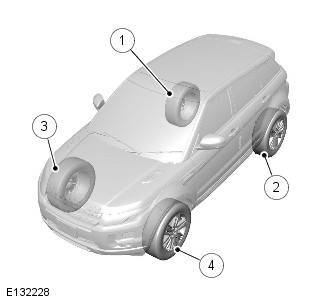
Right-hand drive vehicles
10.
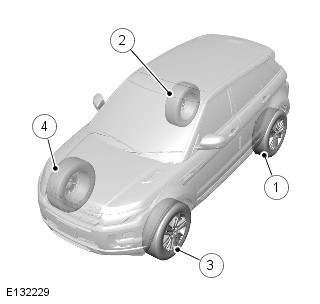
All vehicles
11. CAUTION: The brake fluid reservoir must remain full with new, clean brake fluid at all times during bleeding. With assistance, depress the brake pedal steadily through its full stroke and allow it to return to the rest position. Repeat the procedure until brake fluid, clean and air-free flows into the bleed jar.
12. When brake fluid, clean and air-free flows into the bleed jar, depress and hold the brake pedal down.
13. CAUTION: Make sure the bleed screw cap is installed after bleeding. This will prevent corrosion to the bleed screw. With the brake pedal fully depressed, tighten the bleed screw.
Torque:
Front bleed screw 8 Nm
Rear bleed screw 11 Nm
14. CAUTION: LH illustration shown, RH is similar. Fill the brake fluid reservoir to the MAX mark.
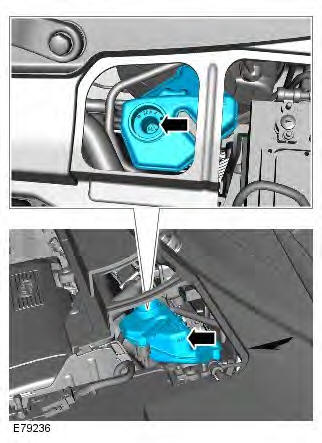
15. WARNING: Braking efficiency may be seriously impaired if an incorrect bleed sequence is used. Repeat the brake bleeding procedure for each brake caliper, following the above sequence.
16. Apply the brakes and check for leaks.
17. CAUTION: LH illustration shown, RH is similar. Install the brake fluid reservoir cap.
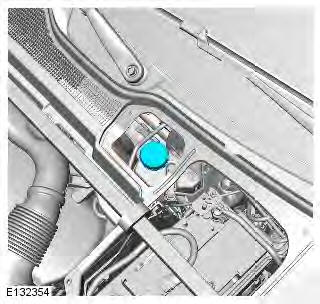
Right-hand drive vehicles
18.
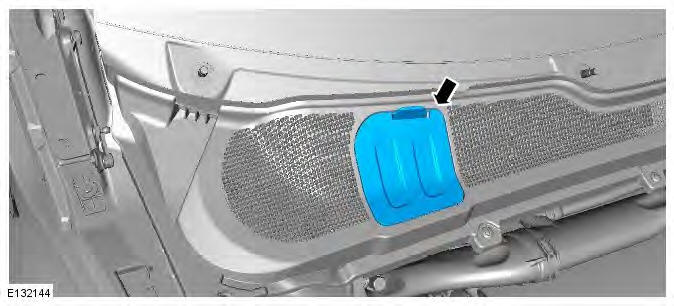
Left-hand drive vehicles
19.
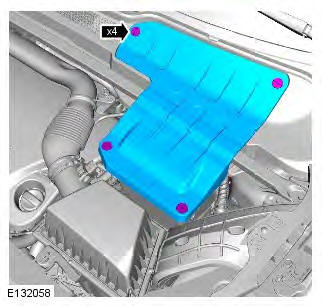
Brake System Pressure Bleeding
Check
CAUTIONS:
Brake fluid will damage paint finished surfaces. If spilled, immediately remove the fluid and clean the area with water.
The brake fluid reservoir must remain full with new, clean brake fluid at all times during bleeding.
NOTE: Some variation in the illustrations may occur, but the essential information is always correct.
All vehicles
1. WARNING: Make sure to support the vehicle with axle stands. Raise and support the vehicle.
2. Check that the brake fluid lines are secure and that there are no signs of a brake fluid leak. If a brake fluid leak is detected, investigate and rectify the cause of the leak before bleeding the brakes.
Right-hand drive vehicles
3.
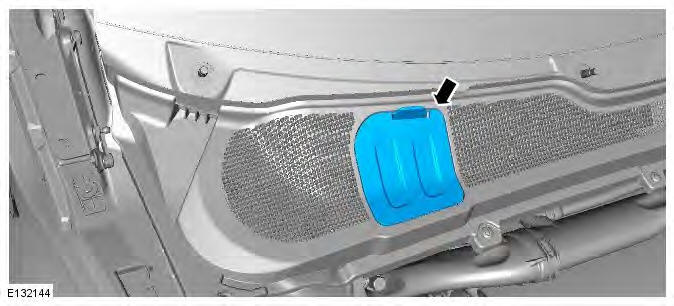
Left-hand drive vehicles
4.
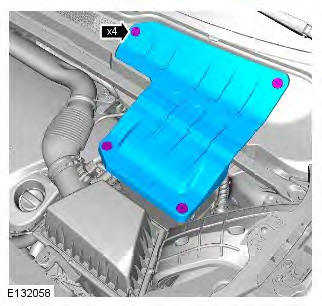
All vehicles
5. CAUTION: LH illustration shown, RH is similar. Remove the brake fluid reservoir cap.
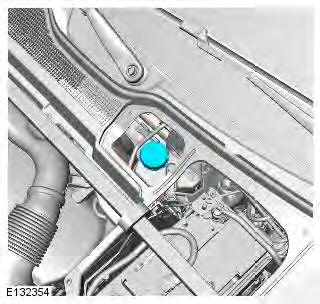
6. WARNING: Do not allow dirt or foreign liquids to enter the reservoir. Use only new brake fluid of the correct specification from airtight containers. Do not mix brands of brake fluid as they may not be compatible.
CAUTION: LH illustration shown, RH is similar. Fill the brake fluid reservoir to the MAX mark.
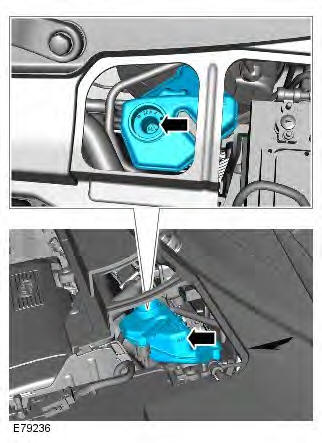
7. Conduct the bleed procedure with the engine running.
Adjustment
All vehicles
1. Install the bleed tube to the brake caliper bleed screw and immerse the free end of the bleed tube in a bleed jar containing a small quantity of approved brake fluid.
Left-hand drive vehicles
2. Starting at the brake caliper furthest away from the brake master cylinder, loosen the bleed screw by one-half to three-quarters of a turn.
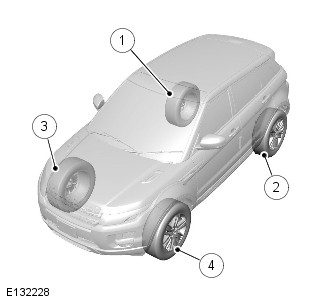
Right-hand drive vehicles
3.
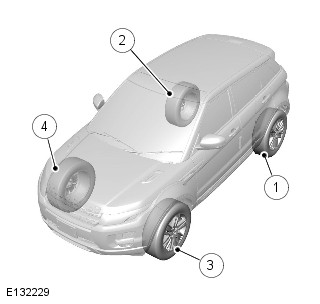
All vehicles
4. With assistance, depress the brake pedal steadily through to 2/3 of its full stroke.
5. With the brake pedal held down, close bleed screw and then return the brake pedal to 1/3 of its full stroke and hold.
6. Repeat steps 4 and 5, 28 times for the rear brake and 10 times for the front brake.
7. At the end of the bleed process, depress and hold the brake pedal down.
8. CAUTION: Make sure the bleed screw cap is installed after bleeding. This will prevent corrosion to the bleed screw. With the brake pedal fully depressed, tighten the bleed screw.
Torque:
Front bleed screw 8 Nm
Rear bleed screw 11 Nm
9. CAUTION: LH illustration shown, RH is similar.
Fill the brake fluid reservoir to the MAX mark.
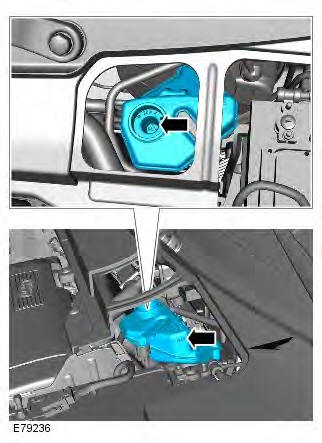
10. WARNING: Braking efficiency may be seriously impaired if an incorrect bleed sequence is used. Repeat the brake bleeding procedure for each brake caliper, following the above sequence.
11. CAUTION: LH illustration shown, RH is similar. Install the brake fluid reservoir cap.
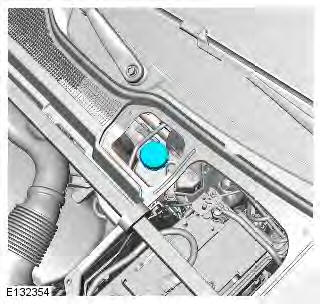
12. Apply the brakes and check for leaks.
Right-hand drive vehicles
13.
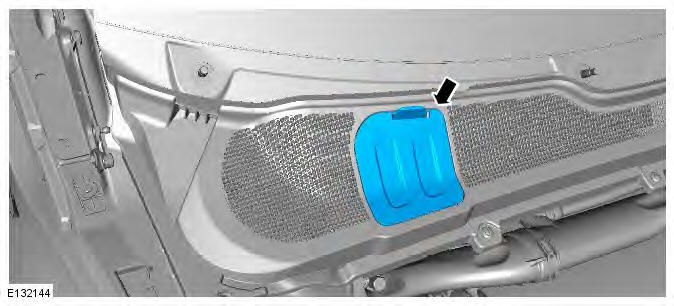
Left-hand drive vehicles
14.
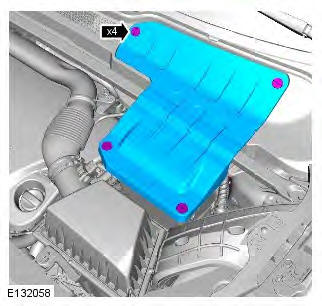
Brake System - General Information
Brake Hydraulic Fluid
CAUTION: * If the fluid shown is not available, use a low viscosity DOT 4 brake fluid meeting ISO 4925 Class 6 and Land Rover LRES22BF03 requirements.

General Specification

Brake System
Principles of Operation
For information on the description and operation of the system, refer to the relevant section of the workshop manual.
Inspection and Verification
WARNING: Before carrying out a road test, make sure the vehicle is safe to do so. Failure to follow this instruction may result in personal injury.
CAUTION: Diagnosis by substitution from a donor vehicle is NOT acceptable. Substitution of control modules does not guarantee confirmation of a fault and may also cause additional faults in the vehicle being checked and/or the donor vehicle.
NOTE: Check and rectify basic faults before beginning diagnostic routines involving pinpoint tests.
1. Verify the customer concern.
- If a road test is necessary make sure the vehicle is safe to do so.
2. Visually inspect for obvious mechanical faults.
Visual inspection
- Brake pad(s) condition and installation
- Brake caliper(s) condition and installation
- Brake disc(s) condition and installation
- Parking brake disc(s)/parking brake drum(s) condition and installation
- Parking brake shoes condition and installation
- Parking brake cable(s) condition and installation
- Brake booster condition and installation
- Brake booster vacuum hose condition and installation
- Brake master cylinder condition and installation
- Hydraulic Control Unit (HCU)
- Brake fluid leaks
- Brake warning indicator
3. If an obvious cause for an observed or reported concern is found, correct the cause (if possible) before proceeding to the next step.
4. Use the approved diagnostic system or a scan tool to retrieve any diagnostic trouble codes (DTCs) before moving onto the symptom chart.
- Make sure that all DTCs are cleared following rectification
Symptom Chart
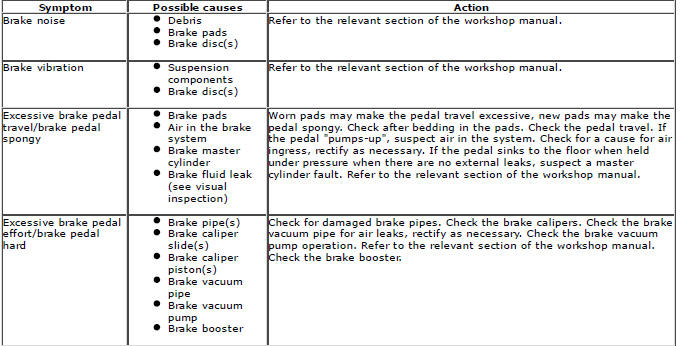
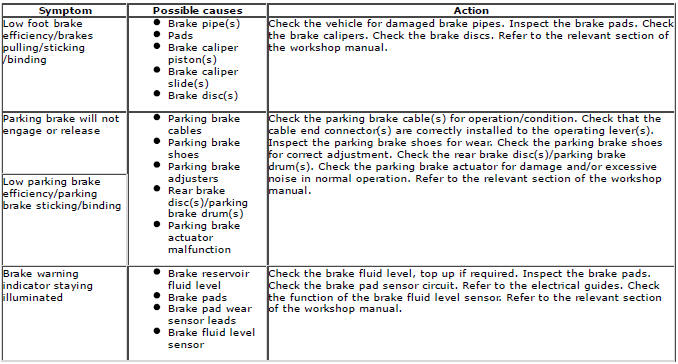
DTC Index
For a complete list of all diagnostic trouble codes that could be logged on this vehicle, please refer to section 100-00.

